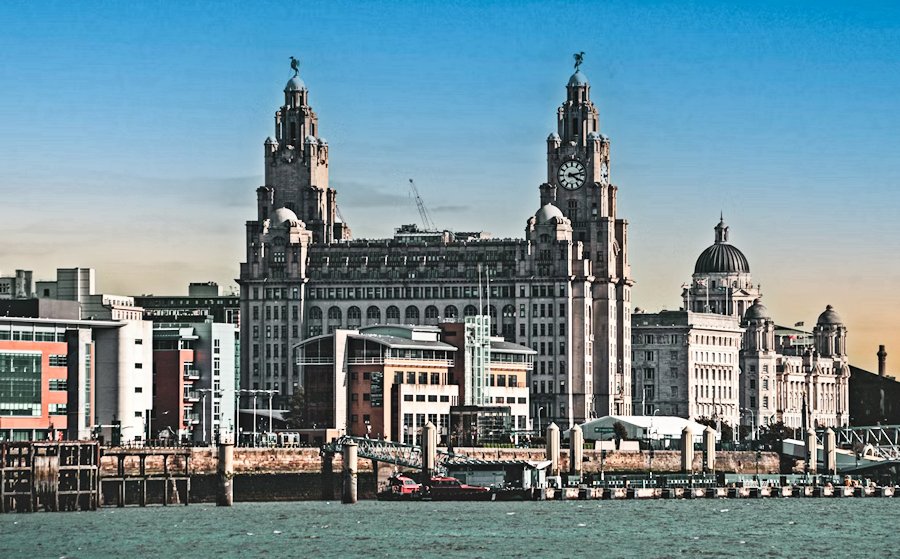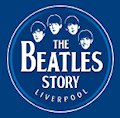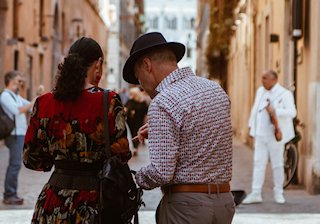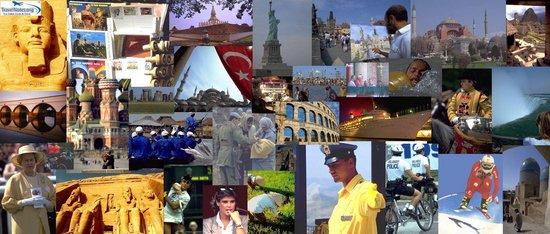Travel Notes: Destinations: Europe: United Kingdom - Liverpool Travel Guide.
Short URL: https://tnot.es/LPL
Travel Guide For Visitors to Liverpool
A fantastic destination for a mini break, Liverpool is a vibrant city full of history, culture,and entertainment. Be sure to take a ferry trip across the River Mersey. Share on Facebook
Capital of Culture
This Merseyside metropolis has transformed from industrial port to cultural heavyweight, earning UNESCO World Heritage status and the title of European Capital of Culture along the way.
 Add a Business -
Add a Location -
Add a Lodging - Add Travel Content
- Add URL
- Travel Services.
Add a Business -
Add a Location -
Add a Lodging - Add Travel Content
- Add URL
- Travel Services.
Visiting Liverpool - The Mersey Beat
Whether you're interested in Beatles history, Premier League football, or world-class museums, Liverpool has a wide range of experiences to offer its visitors.
Getting Your Bearings on Merseyside
Liverpool sits proudly on the River Mersey's eastern bank, roughly 180 miles north-west of London.
The city centre is wonderfully compact and walkable, with most major attractions clustered around the historic waterfront and city centre.
Buses are the best way to get around Liverpool, with day passes and three-day passes available.
The main train station, Liverpool Lime Street, connects directly to London Euston (2.5 hours), Manchester (45 minutes), and other major UK cities.
Liverpool John Lennon Airport (LPL) serves budget airlines and European destinations, while Manchester Airport (MAN) offers more international connections, about an hour's drive away.
The Waterfront - Where History Meets Modern Liverpool
Start at the Albert Dock, where red-brick Victorian warehouses now house some of Britain's finest attractions.
Tate Liverpool
Tate Liverpool showcases contemporary art in a stunning converted warehouse setting.
The Beatles Story Museum
The Beatles Story museum sits alongside, offering an immersive journey through the Fab Four's rise to global stardom.
These aren't dusty displays; expect interactive experiences and original memorabilia that bring the story to life.
There are more galleries and museums here than any other city outside London, making Liverpool a genuine cultural destination rather than a one-trick Beatles pony.
Waterfront Transformation Project
As part of the Waterfront Transformation Project spaces in the Museum of Liverpool have been transformed and refurbished to 'create more immersive and enjoyable experiences for visitors'.
Following the Fab Four
While Beatles tourism could easily dominate your visit, Liverpool handles its musical heritage with surprising subtlety.
Cavern Club
The Cavern Club (10 Mathew St) still hosts live music nightly, though the current venue is a reconstruction of the original.
Matthew Street buzzes with Beatles-themed pubs and shops, but venture beyond the obvious.
Magical Mystery Tour
Take the Magical Mystery Tour bus for kitsch value, but also explore Mendips and 20 Forthlin Road; the National Trust-preserved childhood homes of John Lennon and Paul McCartney respectively.
These intimate spaces reveal the ordinary Liverpool backgrounds that shaped extraordinary talent.
Penny Lane
Penny Lane and Strawberry Field exist, though they're residential areas rather than major attractions.
The real magic lies in walking Liverpool's streets and understanding how this particular city's character influenced the world's most famous band.
Football Fever
Anfield - Home of Liverpool Football Club
Liverpool FC's Anfield stadium offers tours that'll thrill football fans and newcomers alike.
Walking down the tunnel to 'You'll Never Walk Alone' playing gives even neutral visitors goosebumps.
Anfield Stadium ranks among must-see sights and activities for good reason; the stadium tour and museum reveal why this club inspires such devotion.
Everton
Everton FC, Liverpool's 'other' team, have a new stadium at Bramley-Moore Dock; the 'Hill Dickinson Stadium'.
Cultural Quarters and Neighborhoods
The Georgian Quarter showcases Liverpool's elegant 18th and 19th-century architecture.
Hope Street connects the city's two cathedrals,- the Anglican Liverpool Cathedral (Britain's largest cathedral) and the striking modern Metropolitan Cathedral.
The Georgian Quarter offers excellent brunches, with independent cafés and restaurants filling beautiful period buildings.
The Ropewalks area pulses with nightlife, while the Baltic Triangle offers an independent vibe with creative spaces, breweries, and street art.
This former industrial area has become Liverpool's most exciting neighborhood for food, drink, and culture.
Where to Stay in Liverpool
Liverpool offers a wide range of accommodation, from luxury hotels to budget-friendly options.
It’s wise to book in advance, especially if you’re visiting during major events or football matches, as the city can get quite busy.
Best Areas to Stay
Liverpool City Centre is widely regarded as the best area to stay, especially for first-time visitors.
It’s packed with attractions, restaurants, shops, and nightlife, making it the heart of the city.
The City Centre is divided into several vibrant neighbourhoods, each with its own character:
Baltic Triangle
Baltic Triangle is a trendy area full of street art, music venues, and unique eateries.
Cavern Quarter
Cavern Quarter is ideal for Beatles fans and those wanting to experience Liverpool’s legendary music scene.
Georgian Quarter
The Georgian Quarter offers beautiful architecture and a slightly quieter, more refined atmosphere.
Ropewalks
Ropewalks is known for its independent bars, quirky shops, and creative vibe.
Waterfront
Liverpool's Waterfront is perfect if you want to be close to the iconic Royal Albert Dock and the River Mersey.
Tourist Map of Liverpool
Use the Tourist Map of Liverpool to help you decide where to stay in Liverpool based on travel budget, preferred location, planned must-see attractions and local must-do activities.
Food and Drink Scene
Liverpool's dining scene has evolved dramatically.
Michelin-starred restaurants blend with boutique hotels to create sophisticated options alongside traditional Scouse cuisine.
Try Scouse (a hearty lamb and vegetable stew) at local pubs, but also explore the growing number of independent restaurants around Bold Street and the Georgian Quarter.
The city's pub culture thrives, from historic establishments to craft beer bars in the Baltic Triangle.
Rooftop bars offer cocktails with views across the Mersey and city skyline.
Museums Worth Your Time
Liverpool's museum scene extends far beyond Beatles memorabilia.
The Walker Art Gallery houses one of Europe's finest collections of paintings and sculptures.
The World Museum covers everything from ancient Egypt to space exploration across four floors, while Croxteth Hall offers heritage tours.
Beyond the City Centre
Crosby Beach offers a must-see spot for anyone wanting to see the city without reaching for their wallet.
Antony Gormley's 'Another Place' installation features 100 life-sized iron men scattered across the beach and in the sea; a haunting and beautiful sight, especially at sunset.
Ferry Across The Mersey
The Mersey Ferry provides scenic river crossings and circular cruises.
Take a cruise on the River Mersey for different perspectives of Liverpool's skyline and to understand why the river was so crucial to the city's development.
When to Visit
Liverpool works year-round, though summer offers the best weather for walking and outdoor attractions.
Liverpool hosts showstopping events like the Grand National Festival, International Beatleweek, and Liverpool Biennial; so check event calendars when planning.
The city gets busy during football season (August to May) and major events, but rarely feels overcrowded compared to other UK destinations.
Making the Most of Your Stay
Two to three days allows you to see major attractions without rushing, though Liverpool rewards longer stays for those wanting to dig deeper into its neighbourhoods and culture.
Liverpool is a UNESCO City of Music with seriously cool credentials, extending far beyond its most famous musical exports.
Liverpool succeeds because it doesn't rely solely on past glories.
While celebrating its remarkable musical and maritime heritage, the city has evolved into a genuine cultural destination with contemporary relevance.
Whether you arrive for the Beatles, the football, or the museums, you'll certainly leave impressed by Liverpool's broader cultural offerings and warm Scouse hospitality.
More City Travel Guides
City Guides: Cities in Africa - Cities in America - Cities in Asia - Cities in Australasia - Cities in Latin America - European Cities and Regions.
More From Travel Notes
Travel Notes Online Guide to Travel
Africa - Asia - Caribbean - Europe - Middle East - North America - Oceania - South America.
The Travel Notes Online Guide to Travel helps visitors plan their trip with country and city travel guides, local tourist information, reviewed web sites, and inspiring travel content.
Travel and Tourism Guides on Travel Notes
 If you find Travel Notes useful, please take a moment to
like us on Facebook and share with your friends on social media.
If you find Travel Notes useful, please take a moment to
like us on Facebook and share with your friends on social media.
Share on Facebook
Travel Resources
.
Travel & Tourism With Industry Professionals.















